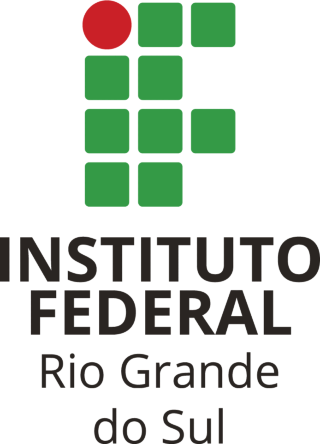Os efeitos da identidade do interlocutor no code-switching empregado por uma criança bilíngue português-hunsrückisch: um estudo de caso
| Title: | Os efeitos da identidade do interlocutor no code-switching empregado por uma criança bilíngue português-hunsrückisch: um estudo de caso |
| Author: | Schneider, Heloísa Pellenz |
| Abstract: |
O contato linguístico entre duas ou mais línguas apresenta-se como um fenômeno dinâmico, caracterizado pela interação de variados códigos em determinado contexto social. Os fluxos migratórios ocorridos no Brasil no século XIX, no que se refere especificamente à vinda de imigrantes alemães para a região sul, culminaram em cenários de intercâmbio linguístico e cultural. Dessa forma, instaurou -se uma contiguidade linguística entre a Língua Portuguesa e a língua de imigração Hunsrückisch (em português, hunsriqueano), trazida por grande parcela dos imigrantes germânicos. Atualmente, em determinadas cidades e regiões gaúchas faz-se presente a manutenção dessa variedade do alemão por parte dos descendentes dos imigrantes que aqui se estabeleceram. Nesse entremeio, a aproximação entre as duas línguas favorece a ocorrência de fenômenos linguísticos específicos, dentre os quais se menciona o code-switching (em português, alternância linguística). A presente pesquisa trata-se de um estudo de caso desenvolvido com um menino bilíngue português-hunsrückisch que atualmente possui 4 anos de idade e é residente da zona rural do município de Nova Petrópolis (RS). O trabalho tem por objetivo geral analisar o emprego do code-switching na fala da criança, reconhecendo os fatores sociolinguísticos que motivam a escolha ora de uma língua, ora de outra. O objetivo específico é constatar a influência dos traços identitários do interlocutor do infante nessa dinâmica de comutação de códigos, analisando-se a inter-relação entre o falante e seu ouvinte. O percurso metodológico, ao envolver um único sujeito de pesquisa, deu-se através da realização de gravações audiovisuais, no decorrer de 14 meses: 2 anos e 10 meses (2:10) a 4 anos de idade (4:00) da criança. Tal coleta dos atos de fala do garoto buscaram apreender sua produção discursiva em situações de interação espontânea com os seus familiares e parentes. Após esse processo, os dados foram analisados de modo a perceber a alternância linguística infantil em função daqueles que interagem discursivamente com a criança. As análises destacam o fato de as escolhas linguísticas do falante serem influenciadas pelo grau de proximidade dele com os seus interlocutores. No que se refere aos interlocutores monolíngues, há um uso categórico do idioma por eles conhecido. Já com relação aos bilíngues, a negociação linguístico-identitária firmada entre a criança e tais sujeitos é que delimita a língua predominante de comunicação: por vezes o português, por vezes o Hunsrückisch. Explora-se, assim, a interdependência entre a linguagem e o seu contexto linguístico-social de uso. Tal investigação oportuniza a verificação dos prismas identitários que permeiam a produção de fala infantil em cenários interativos pautados pelo bilinguismo. Language contact among two or more languages is a dynamic phenomenon, characterized by the interaction of various codes in a given social context. The migratory flows that took place in Brazil in the 19th century, specifically regarding the arrival of German immigrants in the southern region, culminated in scenarios of linguistic and cultural exchange. In this way, a linguistic contiguity was established between the Portuguese language and the Hunsrückisch immigration language (in Portuguese, Hunsriqueano), brought by a large proportion of German immigrants. Nowadays, in certain cities and regions of Rio Grande do Sul (RS), this variety of German is maintained by the descendants of the immigrants who settled here. In this environment, the proximity between the two languages favors the occurrence of specific linguistic phenomena, including code-switching. This research is a case study developed with a Portuguese-Hunsrückisch bilingual boy who is currently 4 years old and lives in the rural area of the town of Nova Petrópolis (RS). The general aim of the study is to analyze the use of code-switching in the child's speech, recognizing the sociolinguistic factors that motivate the choice of one language or the another. The specific objective is to verify the influence of the identity traits of the child's interlocutor on this code-switching dynamic, analyzing the interrelationship between the speaker and his listener. The methodological approach, involving a single research subject, included audiovisual recordings over the course of 14 months: 2 years and 10 months (2:10) to 4 years (4:00) of the child's age. The data collection of the boy's speech captured his discursive production in situations of spontaneous interaction with his family and relatives. After this process, the data was analyzed in order to perceive the child's linguistic switching according to those who interact discursively with the infant. The analysis highlights the fact that the speaker's linguistic choices are influenced by the degree of closeness he has with his interlocutors. Regarding monolingual speakers, the boy categorically used the language they knew. In the case of bilingual interlocutors, it is the linguistic-identity negotiation between the child and these subjects that defines the predominant language of communication: sometimes Portuguese, sometimes Hunsrückisch. Therefore, the study explores the interdependence between language and its linguistic-social context of use. This investigation provides an opportunity to verify the identity prisms that permeate children's speech production in interactive scenarios based on bilingualism. |
| URI: | https://dspace.ifrs.edu.br/xmlui/handle/123456789/1115 |
| Date: | 2023 |
Files in this item
| Files | Size | Format | View | Description |
|---|---|---|---|---|
| 1234567891115.pdf | 1.446Mb |
View/ |
Texto completo |



